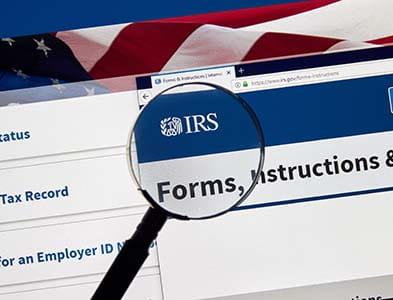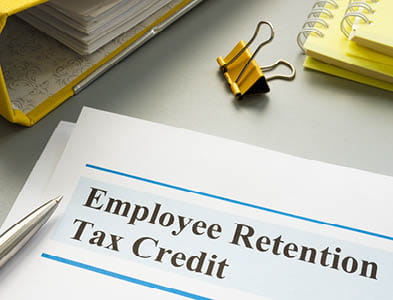ERC Documents Need Checks and Balances to Avoid Deficiencies
ERC Documents Need Checks and Balances to Avoid Deficiencies
The employee retention credit is providing billions of dollars as a financial stimulus to businesses that experienced full or partial suspension of their trade of business operations, experienced a significant decline in gross receipts, or are a recovery startup business.
However, the ERC landscape has been marred by issues related to aggressive advertising, subjective rules around eligibility, and diversity in quality of claim documentation. It’s important to be aware of the most common deficiencies in ERC claim documentation.
Common Deficiencies
Aggregation. The ERC program requires taxpayers to evaluate whether they are part of a controlled or combined group. When aggregation is required, the impacted entities are to be analyzed as a single employer for purposes of determining and documenting eligibility among other criteria as noted in IRS Notice 2021-20. Too often, these rules aren’t being considered, which has led to improper claims resulting from incorrect scoping of the eligibility analysis.
Government orders. Substantiating a position as an eligible employer under the full or partial suspension criteria requires taxpayers to document the orders from an appropriate governmental authority that relate to the suspension of the taxpayer’s operations.
Accordingly, taxpayers should understand what qualifies as a valid order and how it connects to their suspension of operations. We often see that a taxpayer:
- Doesn’t have orders at all
- Can’t connect the restrictions within an order to the suspension of their operations (i.e., the mere presence of an order doesn’t count)
- Is using guidance that the IRS generally doesn’t consider to be “orders from an appropriate governmental authority” (for example, from the Centers for Disease Control and Prevention or Occupational Safety and Health Administration)
Supply chain. As outlined in the Supply Chain General Legal Advice Memorandum, using a supply chain to establish a position as an eligible employer entails a taxpayer’s supplier operations being suspended by government orders and a resulting inability to procure the supplies from an alternative supplier.
We continue to encounter taxpayers who cite supply chain disruption as their basis for eligibility and lack documentation illustrating these factors were present during the periods ERC was claimed.
Gross receipts test. When evaluating a 2020 ERC claim, eligibility under the significant decline in gross receipts begins when the taxpayer has a decline in gross receipts of at least 50% pursuant to CARES Act Section 2301(c)(2)(B)(i). We seldom find taxpayers not claiming that quarter.
However, eligibility ends the day after the period in which gross receipts returned to within 20% of the same quarter in 2019 as outlined in CARES Act Section 2301(c)(2)(B)(ii). In all cases for which a taxpayer had a decline in gross receipts of at least 50%, they will always have at least one trailing quarter of eligibility, which we continue to see overlooked.
The Relief Act Section 207(d)(1)(A) modified these rules for 2021, noting that a taxpayer is considered eligible for the ERC in a quarter for which their gross receipts for such calendar quarter are less than 80% of the gross receipts for the same calendar quarter in calendar year 2019.
Taxpayers generally get this right. However, Relief Act Section 207(d)(2) provides taxpayers the opportunity to elect to determine the gross receipts test based on a prior quarter, whereby the test is performed by using the gross receipts of the immediately preceding calendar quarter when evaluating the significant decline in gross receipts.
Corroborating documentation. IRS Notice 2021-20 instructs taxpayers to create and maintain records that were used to determine that a more than nominal portion of their operations were suspended or that government orders had a more than nominal effect on their business operations.
Many taxpayers fail to possess the proper corroborating documentation to support statements that contributed to the basis for determining their eligibility to claim the ERC. Taxpayers must be prepared to provide documentation that substantiates their assertions and information relied upon for ERC eligibility, as during audits of ERC claims, the IRS isn’t accepting taxpayer assertions at face value.
Documentation Requirements
Proper documentation serves as the foundation of ensuring an eligible and compliant ERC claim. The challenges and diversity in practices among service providers, coupled with common deficiencies in ERC claim documentation, underscore the value of qualified professionals with in-depth subject matter expertise.
Considering the subjectivity and increased scrutiny of the program, taxpayers are reevaluating the perceived risk of their ERC claim with a desire to remediate accordingly.
Given the complexity and nuance, taxpayers are encouraged to seek an independent analysis of their ERC claim documentation from a professional with an understanding of the IRS’ expectations. An unbiased perspective provides taxpayers the opportunity to learn, manage, and mitigate their risks before taking action.
State of the Market
In recent months, the IRS implemented a moratorium on processing all new ERC claims, a withdrawal process, and a voluntary disclosure program as part of its efforts to combat dubious ERC claims.
Further, the IRS has opened more than 300 criminal cases and thousands of ERC claims have been referred for audit. When these audits occur, the IRS makes comprehensive document requests pertaining to a taxpayer’s ERC claim with the expectation that the requested supporting information already exists.
Diversity in Practice
The roles and responsibilities of ERC service providers can vary significantly depending on the provider, and this diversity in practice has created confusion and challenges for taxpayers seeking to claim the ERC. As such, taxpayers must thoroughly understand the terms of their agreements with third-party providers that assist with ERC claims.
Taxpayers shouldn’t assume that ERC service providers produce and maintain documentation to substantiate eligibility — there are various ERC service providers who rely on the taxpayer to attest they understand the rules of the program and have determined their own eligibility for the credit.
The quality and completeness of documentation provided by ERC service providers can vary greatly. Taxpayers must understand the contents of these documents and their relevance to IRS requirements to understand their risk and make informed decisions.
Originally published in Bloomberg Tax
Professionnels Liés
Sujets Liés
-

Article
How Could the IRS Moratorium Affect Your ERC Claims?
-

Commentaire
IRS Announces New ERC Voluntary Disclosure Program
-

Commentaire
IRS Announces Process for Withdrawing Employee Retention Credit Claims
-

Video/Audio
AICPA Tax Section Odyssey Podcast: Justin Elanjian
-

Commentaire
5 Ways Taxpayers Can Spot Employee Retention Credit Scams
-

Commentaire
North Fulton Business Radio: Employee Retention Tax Credit

